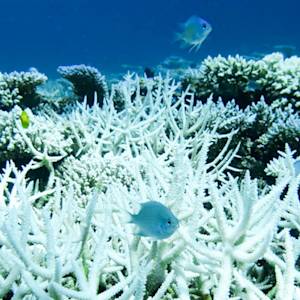The Palmyra Atoll
2005 CE
"The most important marine wilderness area left in the U.S. tropics, the Palmyra Atoll supports five times as many coral species as the Florida Keys and three times as many as Hawaii and the Caribbean. It provides nesting areas for more than one million seabirds and is the only undeveloped, forested atoll in the U.S. tropical Pacific. In 2005, federal legislation increased the amount of protected ocean wilderness surrounding Palmyra to 13 million acres, making it the second largest U.S. marine protected area. 'In a survey of more than 100 marine reserves worldwide, scientists found a 446 percent average increase in biomass of animals and plants, a 166 percent average increase in number of plants or animals and a 1,000 percent increase in biomass and populations density of heavily fished species.' Though all commercial fishing was banned in the Palmyra Atoll, NOAA lacks the rules and resources for enforcement."
WHAT YOU CAN DO
Always choose MSC-certified fish. Support efforts to mitigate global climate change, restore coral reefs, and remove invasive species.
FOR MORE INFORMATION
Visit Protect Palmyra and the Nature Conservancy
Cornell Lab of Ornithology
Explore More


Learn about Maya Lin’s fifth and final memorial: a multi-platform science based artwork that presents an ecological history of our world - past, present, and future.

Discover ecological histories and stories of former abundance, loss, and recovery on the map of memory.

Learn how we can reduce our emissions and protect and restore species and habitats – around the world.

See how art can help us rethink the problems we face, and give us hope that each one of us can make a difference.

Help make a global memorial something personal and close to home. Share your stories of the natural world.
